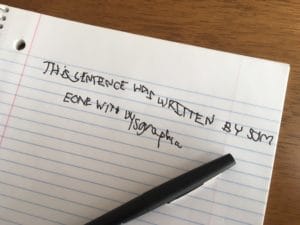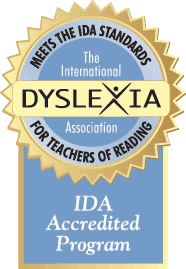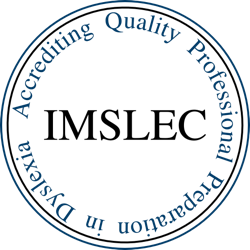Dysgraphia: Is There Something More to “Messy Handwriting”?
Posted by Tammi Brandon on 19th Jan 2017
What Does Messy Handwriting Mean?
As teachers, parents, and educators, we’ve all encountered a child with sloppy handwriting. Sometimes we are quick to judge the child as being lazy, messy, or simply rushing through an assignment. While that may be the case in some situations, a child with consistently messy writing may have a condition called Dysgraphia.
What is Dysgraphia?
What is Dysgraphia? Dysgraphia is a common term used to describe a language processing disorder that coincides with difficulty in fine-motor skills. The word dysgraphia means “difficult” (dys) “writing” (graph). Unfortunately, there is no cure or quick fix. Dysgraphia tends to be familial and occurs slightly more often in males than females. People may be born with it or may acquire it after a traumatic brain injury.
Although dysgraphia may occur alone, it most often occurs alongside other disorders such as Dyslexia, ADHD, Autism Spectrum Disorder, or other language impairments. It may also occur in people with above-average IQs.
How Do You Know if Your Child Has Dysgraphia?
Only a licensed psychologist or a medical professional can diagnose Dysgraphia. In addition to studying writing samples of the child, the examiner will likely evaluate the child’s IQ, design copying skills, spelling and grammar skills, and fine motor development before issuing an official diagnosis.
It is important to note that the term Dysgraphia does not appear in The Diagnostic and Statistical Manual of Mental Disorders-5 (DSM-5); Instead, the examiner may state that the child has “an impairment in written expression” which will allow the student to qualify for special services at school under the Individuals with Disabilities Education Act (IDEA).
What Does Dysgraphia Look Like in the Classroom?
Although some students with Dysgraphia can print neatly, it is often very laborious and painful for them. Students are often criticized for not trying their best and are labeled as lazy or careless because of their inconsistent and messy writing style. This often leads to students developing low self-esteem. Dysgraphic students often have difficulty taking notes in class because they cannot write as quickly or as neatly as their peers. These students often feel a sense of frustration, embarrassment, or defeat.
Symptoms of Dysgraphia
There are tons of symptoms that can indicate a student has Dysgraphia. Symptoms include the following:
- Avoidance of writing and drawing activities
- Difficulty forming letters, numbers, shapes
- Difficulty with spelling and punctuation
- Pain, discomfort, or fatigue when writing or drawing
- Awkward pencil grip
- Unusual body or paper position when writing or drawing
- Inconsistent letter shape, size, formation, spacing
- Difficulty copying text or reproducing shapes
- Difficulty tracing, cutting, tying shoes, putting together puzzles, or completing other fine-motor tasks
- Difficulty reading own handwriting
- Jumbled sentences or words
- Blending cursive and print or mixing capitals and lowercase letters
- Random and inconsistent use of punctuation
- Leaving out words, letters, or punctuation
- Difficulty keeping letters on the lines
- Inconsistent use of margins
- Difficulty organizing and expressing thoughts in writing
- Poor spatial planning
- Difficulty conveying knowledge in writing
Classroom Accommodations
There are some adjustments teachers can make in the classroom to accommodate students who suffer from Dysgraphia. Try using some of these aids and strategies:
- Use of multisensory handwriting programs
- Slant boards
- Paper with raised lines
- Paper with highlighted lines
- Special pencil grips
- Electronic technology to aid notetaking, writing essays, and so on
- Apps such as PaperPort Notes and SnapType which allow students to take pictures of their worksheets and input answers electronically.
- DragonDiction allows students to dictate notes and ideas.
Dysgraphia is more than just messy handwriting. It is a specific language impairment that, when diagnosed properly, will allow students to receive remediation and accommodation in school.
Tammi Brandon, M.Ed., CDP
Tammi Brandon is a Master Instructor and Education Consultant with Brainspring Educator Academy.




